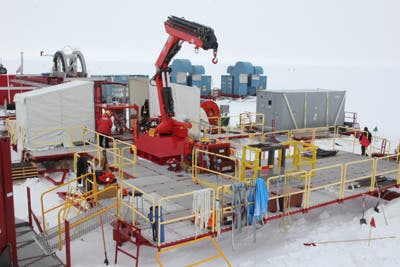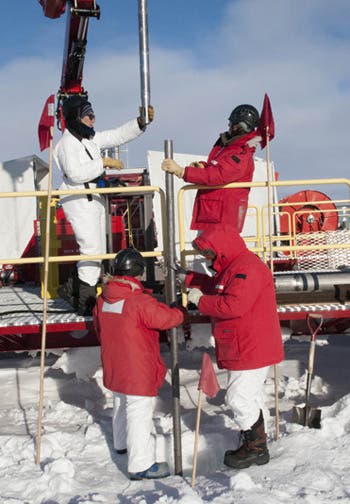Using a specialized hot-water drill to cleanly bore through half a mile of ice, scientists found fish populations thriving in the dark, cold Antarctic. The WISSARD research project is focused both on the geology and biology of the area and will yield valuable information about the mechanics of ice sheets and their potential effects on sea-level rise.
Antarctic Life

As the effects of climate change begin to be more and more visible, it becomes more and more important to understand how the frozen Antarctic environment will react. Earlier this month, researchers had already drilled through 740 meters of ice and now, they went even deeper.
“This season we accessed another critical polar environment, which has never been directly sampled by scientists before: the grounding zone of the Antarctic ice sheet,” said Slawek Tulaczyk, chief scientist on the project, in a news release.
The first thing they noticed was also the most surprising. At -2 degrees Celsius (28 Fahrenheit), in the perpetual darkness, they found thriving life.
“It is fascinating to see so much marine vertebrate and invertebrate life so far away from the open ocean and right where the West Antarctic Ice Sheet goes afloat,” said Slawek Tulaczyk, a chief scientist with the Whillans Ice Stream Subglacial Access Research Drilling (WISSARD) project and a professor of Earth sciences at UC Santa Cruz. “I have spent my scientific career studying how this ice sheet may contribute to future global sea level rise. However, I now realize that retreat of the ice sheet may also impact a unique ecosystem.”
An Icy World

Finding fish in such an environment is not unheard of, but the WISSARD team wants to figure out the underlying mechanism and environmental conditions in the area.
“Finding fish, or any other type of life, under an ice shelf is by itself not novel,” said John Priscu of Montana State University, a WISSARD chief scientist who has studied life in and under Antarctic ice for more than 30 years. “However, our WISSARD data will establish for the first time sources of carbon and energy for higher trophic levels in this most southerly marine ecosystem. Our data will also provide important information on the connectivity between subglacial environments and ice-shelf productivity, allowing us to predict first responders to a warming climate.”
But scientists were mostly interested in the ice dynamics. The Texas-sized Ross Ice Shelf is the world’s largest floating slab of ice and we still don’t know how it (and other areas covered with ice) will react to global warming. Some climate models predict warmer seawater may intrude into grounding zones and cause melting at the base of the ice shelf. A weakening or collapse of the Ross Ice Shelf would allow the ice streams of the WAIS to flow more rapidly into the ocean, which would raise global sea level.
Aside for the scientific achievement, this is also a remarkable engineering achievement. Researchers equipped an underwater robot with a special camera and the footage it shot is also insightful.
“This is the first time that Deep-SCINI ROV has been used in the field and it passed this test with flying colors,” said Frank Rack, principal investigator for the project. “Collecting video of fish living under the ice shelf in this extremely hostile environment far from the front of the ice shelf.”


